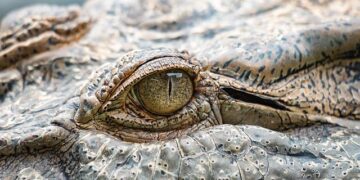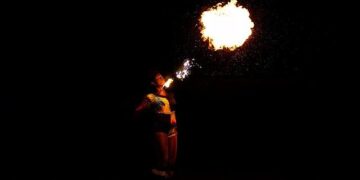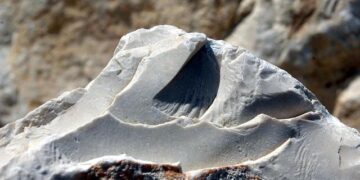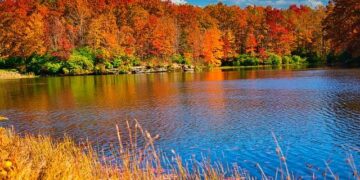In the shadow of two active volcanoes, there’s a stretch of land in Washington State where the earth has goosebumps.
Hundreds of knolls dot a prairie at Mima Mounds Natural Area Preserve, a rare grassland expanse between Mount Rainier and Mount St. Helens. Ranging from two to seven feet tall, and measuring as much as 40 feet across, the Mima mounds are a prominent example of both a stunning natural wonder—and an enduring scientific mystery.
They’re not alone. Similar undulations have appeared on pastures in nearly every other state west of the Mississippi River and even in other countries, such as South Africa.
Yet despite more than a century of digging, no consensus has ever emerged about why these “soil pimples” cropped up on the Mima Prairie—or anywhere else.
(How scientists are studying these five ancient unsolved mysteries.)
“There are theories, which come and go,” says Regina Johnson, an assistant natural areas ecologist with the Washington Department of Natural Resources, which manages the Mima Mounds Natural Area Preserve. By the department’s count, more than 30 published theories exist today—attributing the mounds to everything from earthquakes to an ancient flood to, most prominently, gophers.
Yes, gophers. In 2013, a study showing that these dogged rodents could have created the mounds prompted the journal Science to declare, “Mima Mound Mystery Solved.”
Still, some scientists remained unconvinced. Why does this mound debate keep resurfacing?
How the gopher theory first popped up
Ever since explorers spotted Mima mounds in the Pacific Northwest during the middle of the 19th century, scientists have wondered about their origins. In 1913, geologist J. Harlan Bretz, whose research would later explain the formation of the Channeled Scablands of Eastern Washington, suggested that the earthen bumps spawned from suncups, or pits in snow and ice. As the thinking went, these depressions collected sediments, resulting in rounded piles of soil and rock.
R. C. Newcomb of the U.S. Geological Survey hypothesized in 1940 that the mounds were caused by frost polygons—a phenomenon where ice fills cracks in frozen earth then melts, leaving behind gaps in the soil. Other geologists would later reject this idea.
But in 1942, a student at the University of Washington and a U.S. Fish and Wildlife Service biologist came to a jarring conclusion that nevertheless had staying power: In The Journal of Geology, they pinned the formation of Mima mounds on local pocket gophers.

A trail winds through the Mima mounds at Mima Prairie in Thurston County. Some scientists have hypothesized that gophers may have been responsible for creating these mysterious mounds.
Photograph Courtesy Dan Coe, WGS/DNR

This aerial photo reveals the mysterious patterns on the ground of the Mima Prairie. Another leading theory about the Mima mounds is that that they were formed by a glacial outburst that occurred in the Puget Lowland during the last ice age.
Photograph Courtesy Washington Geological Survey (Washington State DNR)
Over thousands of years, Walter W. Dalquest and Victor B. Scheffer posited, these animals built little hills as they burrowed for plant roots. The seeming equidistance between mounds logically mapped to the bounds of gopher territories. Still, there was one problem with their theory: “In seeming contradiction to our hypothesis,” they wrote, “there are no gophers on this prairie.
(Gophers seem to farm the land much in the same way as humans.)
They believed the rodents must have disappeared from the landscape after the spread of a disease, drought, or fire.
But many scientists weren’t satisfied. Glaciologist A.L. Washburn, in a comprehensive 1988 review, wrote that the “fossorial-rodent hypothesis for mound origin is subject to a number of serious objections.” In areas where rocks in the mounds were too big for gophers to transport, for instance, the theory was easy to dismiss. And even if gophers did inhabit the mounds, their presence wouldn’t necessarily prove causation; they could have selected the area to live because the little hills were already there.
About 70 years after their research was published, Dalquest and Scheffer finally received some significant scientific backing in 2013 when Manny Gabet, a geomorphologist at San Jose State University, happened to visit the Mima Mounds Natural Area Preserve. He heard about the gopher theory and set out to test whether gophers really could have constructed these large, almost uniformly distributed mounds.
He did so by looking at the role gophers play in maintaining the Mima mounds found in California. (Yes, confusingly, they are often called Mima mounds even outside of the Mima Prairie.) Using data from a 1987 study, Gabet and his colleagues developed a computer model that showed how a flat field would change over hundreds of years with randomly distributed gophers burrowing away. The hills they created, it turned out, matched the height and shape of the Mima mounds in California almost exactly, according to a study published in Geomorphology.
“The reason why these mounds were such a mystery for such a long time is because they seem to form very, very slowly, or they seem to form not at all,” Gabet says. “It’s such a slow process that over somebody’s lifetime, you wouldn’t really notice any changes.”
The theory received further support from a seminal 2013 Geological Society of America book, Mima Mounds: The Case for Polygenesis and Bioturbation. Yet, when Gabet brought his gopher findings to the Washington Department of Natural Resources, officials there were still “very skeptical,” he says.
Natural forces
In the latter part of the 20th century and early 21st century, other theories gained prominence to rival Dalquest and Scheffer’s gopher theory. These theories largely centered on a natural force—ice, wind, or water, such as a river—being the source of deposition.
One iteration that remains popular today, the aeolian hypothesis, asserted that vegetation essentially ensnared wind-blown sediment, leading to buildups shaped like mounds. Other hypotheses suggested an inverted scenario: that glacial meltwater eroded the area around trees and other vegetation, creating little valleys between the bumps on which they sat.
(Melting glaciers could reveal how our ancestors dealt with changing climates.)
In 1990, a researcher named Andrew Berg claimed something else entirely: The Mima mounds, he decided, stemmed from earthquake waves. Using a plywood board layered with silt, Berg simulated the vibrations from quakes with a hammer and found he could create mounds “nearly identical to those found in the field.”

The Mima Prairie formed around the southernmost edge of what was once the Cordilleran ice sheet. During the last ice age, this ice sheet forced many rivers flowing out of the Cascade Range to drain southward toward this region—as seen here in a lidar-derived image of ice age drainage channels.
Image Courtesy Washington Geological Survey (Washington State DNR)
In recent years another theory has gained traction, this one focusing more on the origin of the sediments rather than just what formed them into mounds in Washington State. It suggests that a glacial outburst flood swept sediment, including some volcanic rock, from the vicinity of Mount Rainier south to the Puget Lowland nearly 17,000 years ago. It eventually settled atop the gravelly soil that stemmed from a broader glacial recession. The Mima Prairie, it’s proven, formed at the southernmost edge of an ice sheet.
This scientific narrative jibes loosely with the area’s Native oral history. Upper Chehalis knowledge keepers have said a flood left behind mounds shaped like waves. Another traditional story says a rush of water brought whales and porpoises onto the land, which created humps in the terrain. (Whale bones were, in fact, found at the nearby Chehalis River.)
But the chance of a flood like this happening everywhere Mima mounds formed is essentially zilch. And gophers, or some other force, anyhow, still could have moved that sediment to generate mounds. “Multiple explanations are probable,” Washburn wrote back in 1988.
Will we ever know?
Johnson, for one, agrees with Washburn that there may be more than one cause. She prefers some sort of glacial explanation and isn’t so sure about the gopher theory (although the animals do still exist across Western Washington, where the Mima Prairie is located. But she knows wildlife biologists who think it’s true. “Gophers may have done it in some of the places that have mounds,” she says. “It isn’t necessarily going to be the same in other places.”
Gabet still believes that gophers are behind more than just the mounds in California and would like to see his research applied elsewhere.
(These origins of this naked chalk drawing are also still a mystery.)
To be clear, Mima mounds, even within the same region, aren’t all identical. Dan Coe, graphics editor for the Washington Geological Survey, has created maps of the state’s many distinctive landforms. Though some of the mounds he’s spotted in other parts of the Pacific Northwest do resemble the little hills in the Mima Mounds Natural Area Preserve, others are longer and shorter. None match the sheer repetition of circular and elliptical forms.
“The regularity of the pattern of mounds is really striking,” Coe says. “You don’t often see such symmetry, at least in that form, in nature.”
He often visits the 637-acre National Natural Landmark by foot. Home to many ground nesting birds in Western Washington, such as the western meadowlark, the preserve acquires a particular brilliance in spring, as purple camas flowers bloom. Tribes once harvested the landscape’s abundance of bulbs and traded in this area.
Now, tourists and locals who’ve discovered this oft-overlooked landscape between national parks can exchange theories about what prompted its otherworldly landscape. “I don’t know that we’ll ever know for sure,” Johnson says.
But even if no one can agree on what formed the mounds, they can’t deny their lasting effect, especially on the Mima Prairie. “It’s just a surreal place,” says Coe.
>>> Read full article>>>
Copyright for syndicated content belongs to the linked Source : National Geographic – https://www.nationalgeographic.com/environment/article/mima-mounds-mystery































